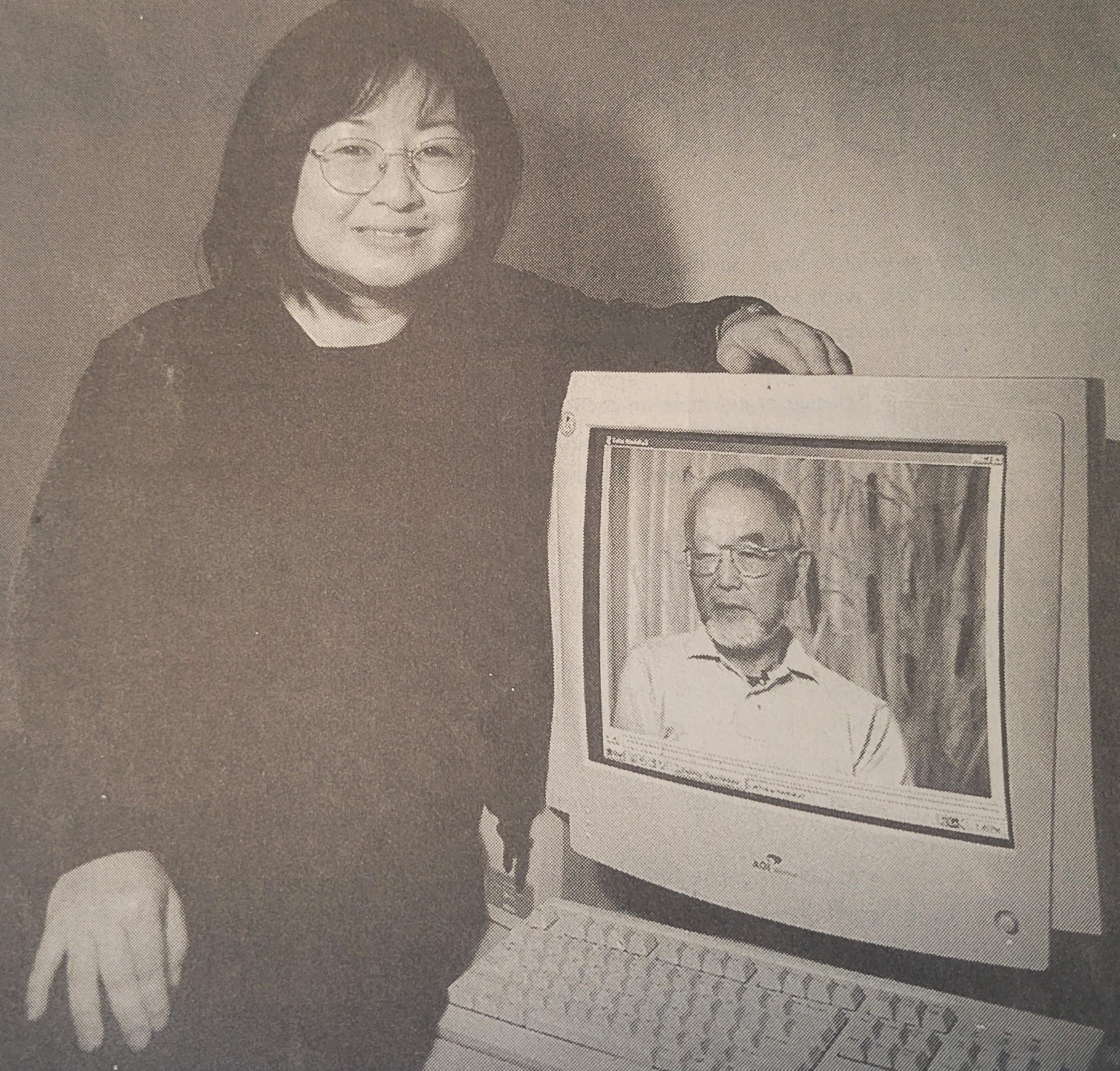BY Barb williams, EASTSIDE HERITAGE CENTER VOLUNTEER
After four difficult years at Pinedale, Tule Lake, and Minidoka incarceration camps some Japanese farmers began returning to their pre-WWII farms in Bellevue. Approximately 20 families of the original 70 chose to return. Those who had leased their farms prior to the war often did not come back. Those having land ownership, often did. However, life was not easy and they had a difficult time recovering their land, jobs, lives, and a sense of Japanese community which had been so strong prior to the War. Their courage, skills as farmers, and contributions to their community have been recognized in multiple ways. Bellevue is a member of the Sister Cities project, Yao Japan being Bellevue’s sister city.
The Suguro family had farmed in Midlakes near Lake Bellevue. Takayoshi and Michi Suguro’s daughter, Sumie, remembers how difficult “it was to come back to a farm in shambles and to return to an unlivable house. The people who lived in our home even had chickens running through the house and our roof was leaking. The Takeshitas, our neighbors, were so kind in having us stay with them until we could clean our house.” Sumie, like other returning Japanese children, had to adjust to attending an almost all-white school after spending four years with only Japanese people. It was a lonely time for her being the only Japanese girl in the class. While going through high school she worked as a live-in nanny to help her family and graduated in 1947. She is proud to say that her father was the last Japanese immigrant (Issei) to farm in Bellevue. He retired in 1953, when the family sold their property to Safeway. Their neighbors, the Takeshita family, had bought their property in 1919 so were able to return to their home and farm; both suffered from neglect. Times had changed making it difficult for Japanese farmers to realize a profit. As land values went up they began to sell their lands to developers. In 1953, the Takeshita family sold their land to the Great Northern Railroad.
Ron Wurzer/Seattle Times: John Matsuoka stands amid his cornfield in Bellevue, where he has farmed for nearly 50 years. (8/20/1997)
Among those to return were John Matsuoka. However, his brother, Tom (Takeo) Matsuoka, a prominent leader in the pre-WWII Bellevue Japanese community, did not. Instead, he continued to farm in Montana where he had been sent during the war. John, who grew up farming in Kent had been sent to Minidoka. In the 1950s he came to Bellevue where he and his wife lived for over 60 years. At the age of 52, he went to work for the Bellevue Post Office from which he retired after 20 years of service. He also leased 3.5 acres of farmland from the Bellevue Parks and Community Services Department at 156th Avenue SE and SE 16th Street. He grew potatoes, brussels sprouts, lettuce and corn. He became famous for his sweet Silver Corn which he sold on Sundays. The Seattle Times and Journal American dubbed him the “Corn Man of Bellevue”. He loved his old tractor and farming. In 1997, at age 82, farming had become a hobby for John; one of the last of a generation of Japanese-American farmers in Bellevue.
Asaichi Tsushima, a pre-WWII Bellevue Issei landowner and community leader, returned to Bellevue. In 1929, he had been the first teacher at the Japanese language school. In 1952, he wrote an extensive documentary, “Pre-WWII History of Japanese Pioneers in the Clearing and Development of Land in Bellevue”. Much of the information is written from memory because many of his notes were lost during incarceration. The document is a treasure; a fine contribution to the legacy of the Japanese pioneers in Bellevue.
Greg Gilbert/Seattle Times: Joan Seko, 80, recalls the tireless work of creating and maintaining her family’s traditional Japanese garden on Bellevue’s Phantom Lake (9/5/2017)
Reminders of the Japanese farmers and their talent was apparent in the beauty of Seko Garden. Joan Seko and her late husband (owners of the Bush Garden restaurant in Seattle) developed a traditional Japanese garden that sloped to the shores of Phantom Lake. By 2017 at age 80 Joan could no longer maintain the grounds. She was hoping to find a way to preserve the garden once she moved off the property.
Duke’s Bellevue Bar & Grill, Barrier Motors, and the Safeway Distribution Center are located on lands formerly owned and farmed by Japanese farmers. Alice Ito’s family was one of them. In 1999, she volunteered with the Eastside Japanese American History Project that designed a traveling exhibit of photographs and text to be sent to libraries, schools, shopping malls, and museums around Washington State.
Teresa Tamura/Seattle Times: Alice Ito interviewed Japanese Americans, including her father who is pictured on the computer screen, as a part of an Eastside history project that spans 1898 through the 1950s (4/15/1999)
Rick Schweinhart/Journal: A display about the history of the Eastside Japanese Americans is open at Bellevue City Hall. The exhibit documents the thriving Japanese American community before World War II (4/21/1999)
Michal Friesen, third grade teacher at Woodridge Elementary in Bellevue, teaches her students about Japanese American history (4/2022). She and her fellow teachers notify families before they begin teaching the unit. They stick to the facts, use age-appropriate clips of interviews and picture books. She feels that “You cannot tell the history of Bellevue without talking about the Japanese immigrants and the community that helped form it.”
Resources
Eastside Heritage Center Archives: obituaries, newspaper articles, Sumie Akizuki, Rose Yabuki Matshushita
Publication, The Seattle Times, “A Hidden Past: An Exploration of Eastside History”. 12/1997 - 1/2000
Asaichi Tsushima, Pre-WWII History of Japanese Pioneers in the Clearing and Development of Land in Bellevue, 1992





